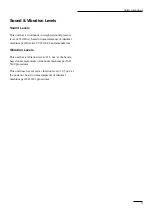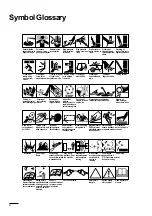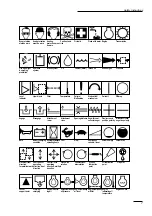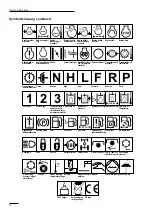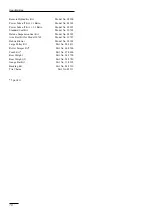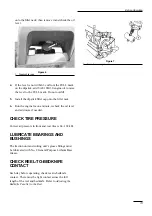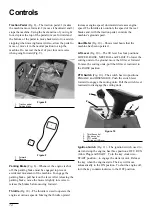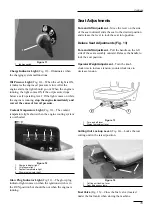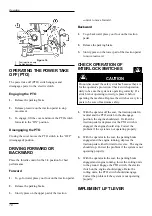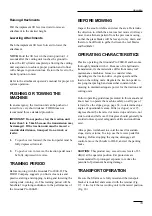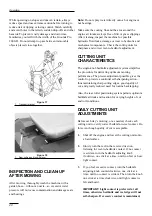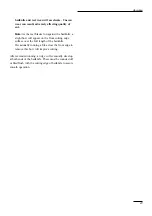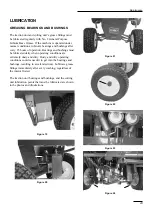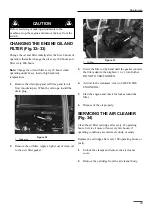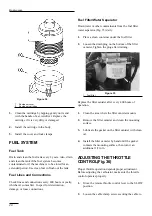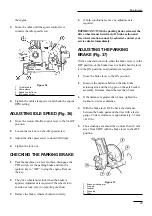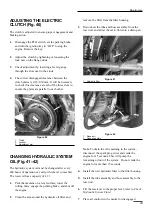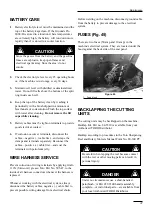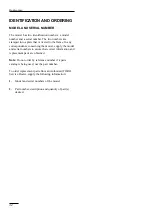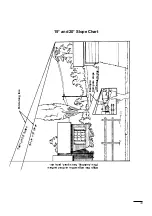
Raising Attachments
Pull the implement lift lever rearward to raise an
attachment to the desired height.
Lowering Attachments
Push the implement lift lever forward to lower the
attachment.
NOTE: Hold the lift lever in the down position 1–2
seconds after the cutting unit touches the ground to
retract the lift cylinder completely, allowing the cutting
unit suspension to achieve proper position and to float
with changes in ground contour. Return the lever to the
neutral position to mow.
Refer to the attachment operator’s manual for proper lift
system operation.
PUSHING OR TOWING THE
MACHINE
In an emergency, the traction unit can be pushed or
towed for a very short distance. TORO does not
recommend this as standard procedure.
IMPORTANT:
Do not push or tow the traction unit
faster than 3 to 5 kmh because the transmission may
be damaged. If the traction unit must be moved a
considerable distance, transport it on a truck or
trailer.
1.
To push or tow forward, the traction pedal must be
fully depressed forward.
2.
To push or tow in reverse, the traction pedal must
be fully depressed in reverse.
TRAINING PERIOD
Before mowing with the Grounds Pro 2000-D, The
TORO Company suggests you find a clear area and
practice starting and stopping, raising and lowering the
cutting units, turning, etc. This training period will be
beneficial in gaining confidence in the performance of
the Grounds Pro 2000-D.
BEFORE MOWING
Inspect the area for debris and clear the area. Determine
the direction in which the area was last mowed. (Always
mow in an alternate pattern from the previous mowing,
so that the grass blades will be less apt to lay down and
therefore be difficult to gather between the reel blades
and bedknife.)
OPERATING CHARACTERISTICS
Practice operating the Grounds Pro 2000-D and become
thoroughly familiar with it. Because of its hydrostatic
transmission, its characteristics differ from many turf
maintenance machines. Issues to consider when
operating are the traction drive, engine speed and the
load on the cutting units. Regulate the traction pedal to
keep engine rpm high and somewhat constant while
mowing to maintain adequate power for the traction and
cutting units.
Follow operating guidelines presented in this manual and
know how to operate the machine safely on all types of
terrain. Use the slope gauge, page 34, to determine slope
angles of questionable areas. Hills (or slopes) over 15
degrees should be traversed or mowed up and down, not
side to side and hills over 20 degrees should generally be
avoided unless special safeguards, skills and conditions
exist.
Always plan well ahead to avoid the need for sudden
stops, starts or turns. To stop, use the reverse pedal for
braking. Before stopping the engine, disengage all
controls, move the throttle to IDLE, and set the parking
brake.
CAUTION:
This product may exceed noise levels of 85
dB(A) at the operator position. Ear protectors are
recommended for prolonged exposure to reduce the
potential of permanent hearing damage.
TRANSPORT OPERATION
Be sure the lift arms are fully raised and the transport
bracket is installed and secured with the retainer (Fig.
17). Also, lock the rear cutting unit in the raised position
(Fig. 18).
Operation
19
Summary of Contents for 2003
Page 16: ...Figure 15 1 Fuel valve Controls 16 1 ...
Page 24: ...Figure 25 Figure 26 Figure 27 Figure 28 Figure 29 Figure 30 Figure 31 24 Maintenance ...
Page 34: ......
Page 35: ......
Page 36: ......

